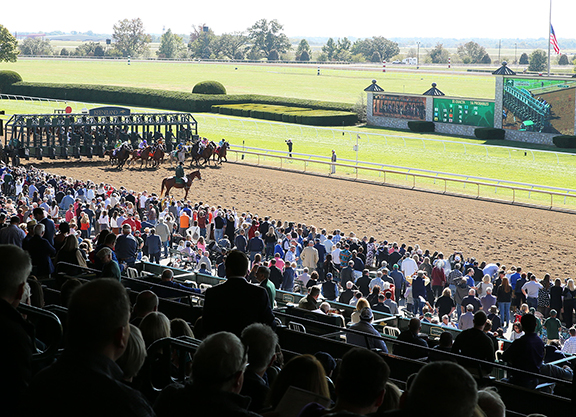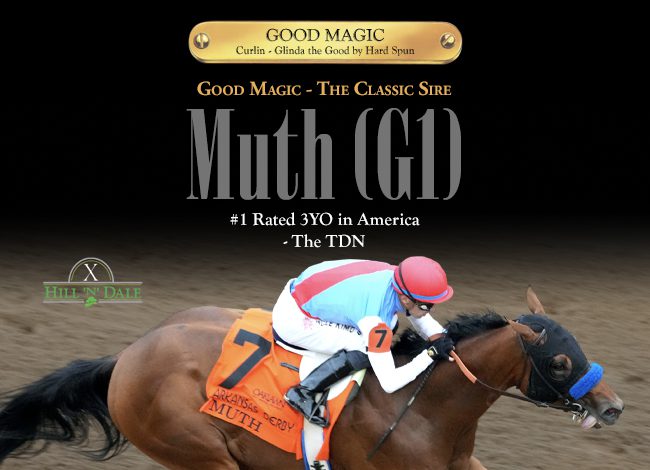By Katie Petrunyak
The question is asked on early mornings between cups of coffee along the backside. It is asked in meetings at conference tables alongside data, graphs, and statistics. It is asked when a beautiful afternoon of racing is darkened as a curtain goes up on the track. What can we do better?
It is a question that every racetrack in the world has been asking for decades. This year, it is a question for which tracks in the United States are required to have an answer.
What can we do better? At Keeneland Race Course, the answer is consistency. The team's philosophy is to have everything as consistent as possible for each horse during their time at Keeneland. Keeneland's Vice President and Chief Operating Officer Vince Gabbert says, “The safety of our horses and riders is Keeneland's number one priority. Toward that goal, we are trying to reduce the amount of variables that are out there so that we can provide consistency from a conditions standpoint, but also consistency for each horse from the moment they step on the grounds to the moment they leave the grounds.”
This fall, Keeneland added two new positions with the sole intent of providing consistency among their team, the horses, and the racetrack in order to provide the safest environment possible.
Equine practitioner Dr. George Mundy took on the position of Equine Safety Director. Dr. Mundy's role is to monitor each horse's condition in every stage from training in the morning, to the paddock on race day, to the walk back to the barn following a race. Gabbert says, “Dr. Mundy would spend each morning watching horses in training, going through the barns, and talking to trainers and practicing veterinarians to understand any problems a horse might have.” The intent was for Dr. Mundy to be a resource for their team, so that everyone could be on the same page. “He would have engaged discussions with state regulatory vets as well as practicing vets, to make sure there was a great overlap of knowledge and that everyone knew what was going on, what to look for, and how they could all help.” Dr. Mundy's roles also include communicating and enforcing safety policies, as well as reviewing all racing-related accidents with the goal of prevention.
Jim Pendergest took on the second position as Director of Racing Surfaces. Pendergest has worked at Keeneland for 19 years, having overseen the installation of the all-weather surface in 2006 and dirt surface in 2014, and is also the general manager of the Thoroughbred Training Center. The goal of this new role was to maintain a consistent surface during the meet, as well as to collect and review data on the track surface to find new ways to improve. Every morning, testing was done on the track during the break in training and after the break. Moisture content was measured at 65 different locations around both the dirt and turf track, and GPS coordinate measurements were used to ensure the surface was consistent all the way through. Gabbert says of Pendergest's role on race day, “Jim, along with Dr. Mundy, worked throughout the afternoon talking to jockeys and trainers to understand how the conditions and surface change throughout the day as temperatures fluctuate or wind patterns change. This allows us to make adjustments to ensure we are providing the most consistent surface possible.”
Gabbert says the two additional positions were a huge asset to the team and will still be in place next year. “Both positions were a huge benefit to being able to understand all the variables in making sure we are doing everything from a surface standpoint and a facilities standpoint to provide as safe as conditions as possible.”
Keeneland has also made a point of providing transparency to their patrons. Gabbert said, “Transparency is key. You have to be willing to understand and own everything around it. There's a lot that happens around these animals and this business that most people aren't aware of, and I think it's important for us to tell that story.” On the Keeneland website, a track safety database is provided that describes every breakdown or incident that occurs during the race meet. It also lists the number of horses on the track each day, the number of horses with timed workouts, the number of race starters, as well as track and turf moisture content. Gabbert says, “It's important to provide the context both in the amount of science and research that goes into the surface, and the number of horses that are on our track every single day.”
Keeneland's October meet was marked by five breakdowns. While Keeneland is still waiting on the necropsies from the Kentucky Horse Racing Commission (KHRC), Gabbert said that their team will do their own internal review once they get the results back. Gabbert said that Keeneland's team puts in a comprehensive effort after each breakdown to learn what, if anything, they could have done differently.
“There is a large amount of time, effort, and energy that goes into the analysis of each breakdown, asking ourselves what did we potentially miss that could have been a factor in this situation, and how can we prevent it moving forward.”
This month, Keeneland's team has turned the page on the fall race meet to look ahead to racing in April. Gabbert said, “Our safety initiative meetings are frequent and gaining momentum. We are looking into new procedures to have in place, and reviewing information and data points that can help us improve as we look to the next meet.”
This year, Keeneland gifted $1.3 million to the Keeneland Endowed Chair in Equine Veterinary Science to help launch a world-class equine medication-testing laboratory at the University of Kentucky's Gluck Equine Research Center under the direction of Dr. Scott Stanley. Gabbert said, “UK will play an integral role in the research and science necessary to evolving the safety of our sport. We are excited about the benefits that this will mean not only for our industry but also for the Commonwealth moving forward. We are fortunate to have not only some of the best equine veterinarians, lawyers, and bankers here in Lexington, but also the best equine researchers. It is important to take advantage of these opportunities right at our back door.”
Keeneland has also been working to advocate regulatory changes to the KHRC. Gabbert says, “Our process in Kentucky is different than in other states like New York and California because they can do everything by house rule. Much of what we want to do requires regulatory change, so the process has to start with the racing commission. We have formed an unprecedented alliance between Keeneland, Ellis Park, Churchill Downs, Kentucky Downs, and Turfway to achieve this goal.”
Keeneland, along with Churchill Downs, has brought several items forth to the Kentucky Equine Drug Research Council, an advisory board to the KHRC. The most prominent proposal, the phase-out of Lasix, recently failed to pass the EDRC. Gabbert said, “We are petitioning the full commission at our Dec. 10 meeting, and we are going to continue to push.” Three other recommendations by Keeneland and Churchill have already been approved by the EDRC: the withdrawal time for non-steroidal anti-inflammatory drugs to be extended from 24 hours to 48 hours, the elimination of bisphosphonate usage for racing in horses four-years-old or younger, and the extended ban on the use of intra-articular corticosteroids from seven days to 14 days. These three recommendations will be made to the KHRC.
As Keeneland looks ahead to the April meet, Gabbert says the team will be working over the next few months to find new ways to improve. “There's a continued and renewed focus from our standpoint on answering the question 'what can we do better?' We want to do everything we can at a racetrack level to provide the safest conditions we can to our human and equine athletes.”
Not a subscriber? Click here to sign up for the daily PDF or alerts.






